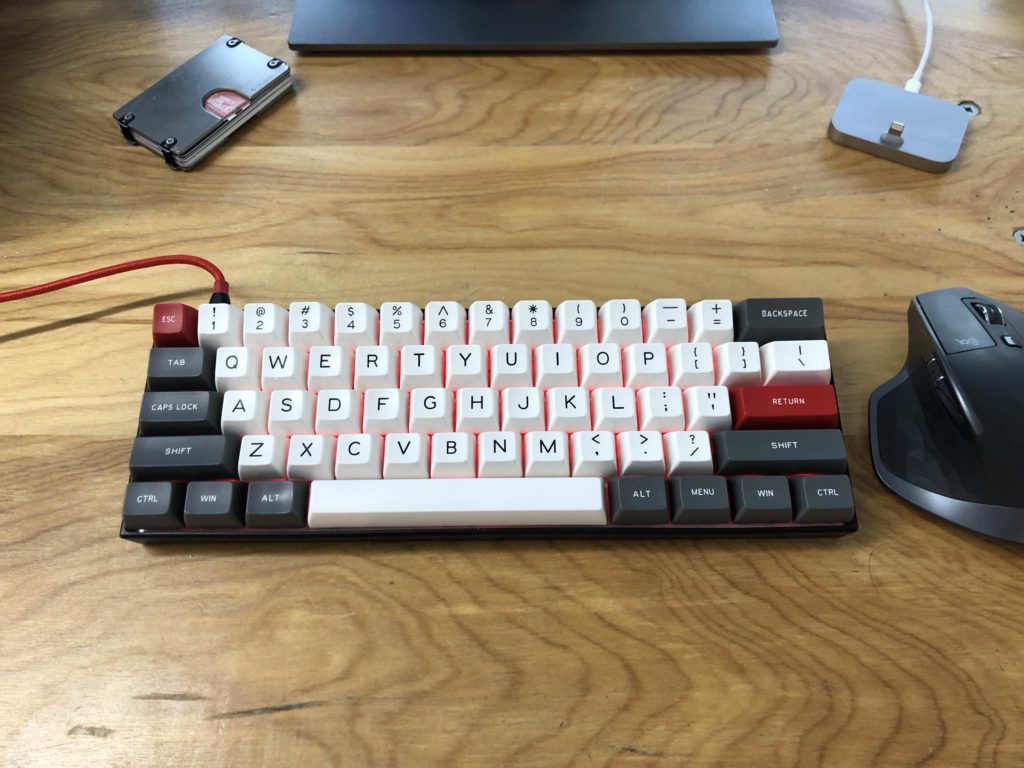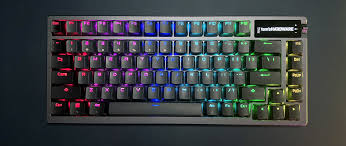Introduction
- Hook: Highlight the growing popularity of wireless keyboards and the convenience they offer.
- Significance: Discuss the importance of finding the right wireless keyboard for individual needs and preferences.
- Overview: Provide a brief overview of what readers can expect to learn from the guide.

Section 1: Understanding Wireless Keyboards
- Introduction to Wireless Keyboards: Define what wireless keyboards are and how they differ from wired keyboards.
- Advantages and Disadvantages: Explore the benefits and drawbacks of using wireless keyboards compared to wired ones.
- Types of Wireless Connections: Discuss the different types of wireless connections used in keyboards, such as Bluetooth and RF.
Alright, let’s start by demystifying wireless keyboards. You’ve probably seen them around – those sleek, cable-free beauties that promise to declutter your desk and give you the freedom to type from anywhere in the room. But what exactly are they, and how do they work? Let’s dive in and find out!
Introduction to Wireless Keyboards: Picture this: no more tangled cords, no more tripping hazards – just you and your keyboard, free to roam wherever your heart desires. That’s the beauty of wireless keyboards. Unlike their wired counterparts, wireless keyboards use radio frequency (RF) signals or Bluetooth technology to communicate with your computer or other devices, giving you the freedom to type without being tethered to a desk.
Advantages and Disadvantages: Now, let’s talk about the pros and cons of going wireless. On the plus side, wireless keyboards offer unparalleled flexibility and convenience. You can type from the comfort of your couch, control your computer from across the room during presentations, or even use your keyboard with multiple devices without having to swap out cables. However, there are some trade-offs to consider, like potential connectivity issues, battery life concerns, and the occasional lag or delay in response time.
Types of Wireless Connections: When it comes to wireless keyboards, there are a few different types of connections to choose from. Bluetooth keyboards connect to your devices wirelessly using Bluetooth technology, making them compatible with a wide range of devices like smartphones, tablets, and laptops. RF keyboards, on the other hand, use a USB dongle to connect to your computer via radio frequency signals, offering a more reliable connection over longer distances.
By understanding the basics of wireless keyboards and the different types of connections available, you’ll be better equipped to choose the right keyboard for your needs. So, whether you’re looking for the freedom to type from anywhere or just want to declutter your workspace, a wireless keyboard might be just what you need to take your typing experience to the next level!

Section 2: Factors to Consider When Choosing a Wireless Keyboard
- Ergonomics and Comfort: Discuss the importance of ergonomic design and comfort features in wireless keyboards.
- Battery Life and Power Options: Explore factors affecting battery life, including battery type, power-saving features, and rechargeable options.
- Compatibility and Connectivity: Highlight the importance of compatibility with different devices and the ease of connecting the keyboard to multiple devices.
- Keyboard Layout and Features: Discuss the various keyboard layouts, key configurations, and additional features like backlighting and media controls.
Alright, now that we know what wireless keyboards are all about, let’s talk about how to choose the perfect one for you. With so many options out there, it can be overwhelming to narrow down your choices. But fear not! We’re here to walk you through the key factors to consider when picking out your new wireless keyboard.
Ergonomics and Comfort: First things first, let’s talk about comfort. After all, you’re going to be spending a lot of time with your new keyboard, so it’s important to make sure it feels good to type on. Look for keyboards with ergonomic designs, cushioned palm rests, and adjustable tilt angles to reduce strain and fatigue during long typing sessions.
Battery Life and Power Options: Next up, let’s talk about power. Since wireless keyboards run on batteries, it’s crucial to consider battery life when making your decision. Look for keyboards with long battery life ratings or rechargeable options to minimize the hassle of constantly changing batteries. Some keyboards even come with power-saving features like automatic sleep modes to conserve battery life when not in use.
Compatibility and Connectivity: Now, let’s talk about compatibility. Make sure the keyboard you choose is compatible with your devices, whether it’s your computer, tablet, or smartphone. Bluetooth keyboards are great for connecting to a variety of devices wirelessly, while RF keyboards offer a more reliable connection for desktop computers. Also, consider the ease of connecting the keyboard to multiple devices and switching between them seamlessly.
Keyboard Layout and Features: Last but not least, let’s talk about the keyboard itself. Consider factors like layout, key size, and additional features like backlighting, media controls, and customizable shortcuts. Think about how you’ll be using your keyboard – for typing, gaming, or both – and choose a layout and feature set that suits your needs.
By considering these factors when choosing a wireless keyboard, you can ensure that you find the perfect fit for your typing style, preferences, and lifestyle. So go ahead, explore your options, and get ready to take your typing experience to the next level with the perfect wireless keyboard by your side!

Section 3: Types of Wireless Keyboards
- Standard Wireless Keyboards: Explore traditional wireless keyboards designed for general use and productivity tasks.
- Compact and Portable Keyboards: Discuss smaller, lightweight wireless keyboards suitable for travel and on-the-go use.
- Gaming Wireless Keyboards: Highlight wireless keyboards optimized for gaming, featuring mechanical switches, customizable keys, and gaming-specific features.
- Ergonomic Wireless Keyboards: Explore wireless keyboards with ergonomic designs aimed at reducing strain and discomfort during extended typing sessions.
Now that we’ve covered what to look for in a wireless keyboard, let’s dive into the different types available. Just like with wired keyboards, there’s a wide variety of wireless keyboards to choose from, each tailored to different needs and preferences. So, let’s explore the options and find the perfect fit for you!
Standard Wireless Keyboards: First up, we have your standard wireless keyboards. These are your everyday keyboards, perfect for general use and productivity tasks. They typically feature a full-size layout with all the standard keys you’d expect, along with wireless connectivity for added convenience. If you’re looking for a reliable and versatile keyboard for everyday use, a standard wireless keyboard might be just what you need.
Compact and Portable Keyboards: Next, we have compact and portable keyboards. These keyboards are perfect for on-the-go use, whether you’re working from a coffee shop, traveling for business, or just need a keyboard that won’t take up too much space on your desk. Compact keyboards come in a variety of sizes, from mini keyboards with just the essentials to slim keyboards with full-size keys in a smaller footprint.
Gaming Wireless Keyboards: If you’re a gamer, you might be interested in a gaming wireless keyboard. These keyboards are designed with gamers in mind, featuring features like mechanical switches for fast and precise key presses, customizable RGB lighting for a personalized gaming setup, and gaming-specific features like macro keys and anti-ghosting technology. Whether you’re into FPS, MOBAs, or MMOs, a gaming wireless keyboard can take your gaming experience to the next level.
Ergonomic Wireless Keyboards: Last but not least, we have ergonomic wireless keyboards. These keyboards are designed with comfort in mind, featuring ergonomic layouts and designs aimed at reducing strain and discomfort during extended typing sessions. They often come with features like split key layouts, adjustable tenting angles, and cushioned wrist rests to promote a more natural and ergonomic typing position.
By understanding the different types of wireless keyboards available, you can narrow down your options and find the perfect keyboard for your needs. So, whether you’re looking for a standard keyboard for everyday use, a compact keyboard for travel, a gaming keyboard for intense gaming sessions, or an ergonomic keyboard for comfort, there’s a wireless keyboard out there that’s perfect for you!

Section 4: Tips for Choosing the Right Wireless Keyboard
- Assessing Your Needs: Discuss the importance of assessing individual needs and preferences when choosing a wireless keyboard.
- Reading Reviews and Comparisons: Highlight the value of reading reviews and comparisons to make informed purchasing decisions.
- Testing and Trying Keyboards: Recommend testing keyboards in-store or purchasing from retailers with generous return policies to ensure compatibility and satisfaction.
- Considering Long-Term Use: Encourage readers to consider factors like durability, future compatibility, and warranty when choosing a wireless keyboard.
Alright, now that we’ve explored the different types of wireless keyboards, let’s talk about some tips for choosing the perfect one for you. With so many options available, it can be overwhelming to make a decision. But fear not! We’ve got some insider tips to help you navigate the world of wireless keyboards like a pro.
Assessing Your Needs: First things first, take some time to assess your needs and preferences. Think about how you’ll be using your keyboard – for typing, gaming, or both – and consider factors like layout, key size, and additional features. Do you need a full-size keyboard with a numeric keypad, or are you looking for something more compact and portable? By understanding your needs upfront, you can narrow down your options and find a keyboard that’s tailored to you.
Reading Reviews and Comparisons: Next, do your research. Reading reviews and comparisons can be incredibly helpful when choosing a wireless keyboard. Look for reviews from reputable sources and read what other users have to say about their experiences with different keyboards. Pay attention to factors like build quality, connectivity, battery life, and typing feel to get a sense of what to expect from each keyboard.
Testing and Trying Keyboards: If possible, try before you buy. Testing keyboards in-store or purchasing from retailers with generous return policies can give you a hands-on feel for how each keyboard performs. Pay attention to factors like key travel, key responsiveness, and overall comfort to determine which keyboard feels best for you. And don’t be afraid to ask questions – knowledgeable sales associates can help guide you towards the right keyboard for your needs.
Considering Long-Term Use: Lastly, think about the long term. When choosing a wireless keyboard, consider factors like durability, future compatibility, and warranty coverage. Look for keyboards with solid build quality and reputable brands known for their reliability. And don’t forget to check the warranty – a longer warranty can provide peace of mind and protection against potential issues down the road.
By following these tips, you can make an informed decision and choose the perfect wireless keyboard for your needs. So go ahead, explore your options, and get ready to enjoy the freedom and convenience of wireless typing with the perfect keyboard by your side!

Section 5: Maintenance and Care Tips
- Cleaning and Maintenance: Provide tips for cleaning and maintaining wireless keyboards to prolong their lifespan and performance.
- Battery Replacement and Charging: Discuss best practices for replacing batteries and charging rechargeable wireless keyboards.
- Troubleshooting Common Issues: Offer troubleshooting tips for addressing common wireless keyboard problems like connectivity issues and battery drain.
Alright, now that you’ve found the perfect wireless keyboard, let’s talk about how to keep it in tip-top shape for the long haul. Just like any piece of tech, wireless keyboards need a little TLC from time to time to keep them performing at their best. So, let’s dive into some maintenance and care tips to ensure your keyboard stays in prime condition for years to come!
Cleaning and Maintenance: First things first, let’s talk about cleaning. Over time, dust, dirt, and crumbs can accumulate between the keys and underneath the keycaps, affecting performance and hygiene. Regular cleaning is key to keeping your keyboard looking and feeling its best. You can use compressed air, a soft brush, or a keycap puller to remove debris from between the keys, and a damp cloth or alcohol wipe to clean the keycaps and keyboard frame.
Battery Replacement and Charging: Next up, let’s talk about power. If your wireless keyboard runs on batteries, it’s important to keep an eye on the battery life and replace them as needed. Make sure to use high-quality batteries and follow the manufacturer’s recommendations for battery replacement. If your keyboard is rechargeable, be sure to charge it regularly to ensure it stays powered up when you need it most.
Troubleshooting Common Issues: Despite your best efforts, you may encounter issues with your wireless keyboard from time to time. Whether it’s connectivity issues, unresponsive keys, or a malfunctioning battery, don’t panic – most problems can be easily fixed with a little troubleshooting. Check the connection, replace the batteries, or try resetting the keyboard firmware to see if that resolves the issue. If all else fails, don’t hesitate to reach out to the manufacturer for assistance.
By following these maintenance and care tips, you can ensure that your wireless keyboard stays in peak condition and continues to provide you with a reliable typing experience for years to come. So go ahead, show your keyboard some love, and enjoy countless hours of wireless typing bliss!

Conclusion
- Summary: Recap key takeaways from the guide, emphasizing the importance of choosing the right wireless keyboard for individual needs and preferences.
- Encouragement: Encourage readers to explore the wide range of wireless keyboards available and find the perfect fit for their lifestyle.
- Closing Statement: Reinforce the value of wireless keyboards as versatile tools for enhanced productivity, convenience, and comfort in the digital age.

